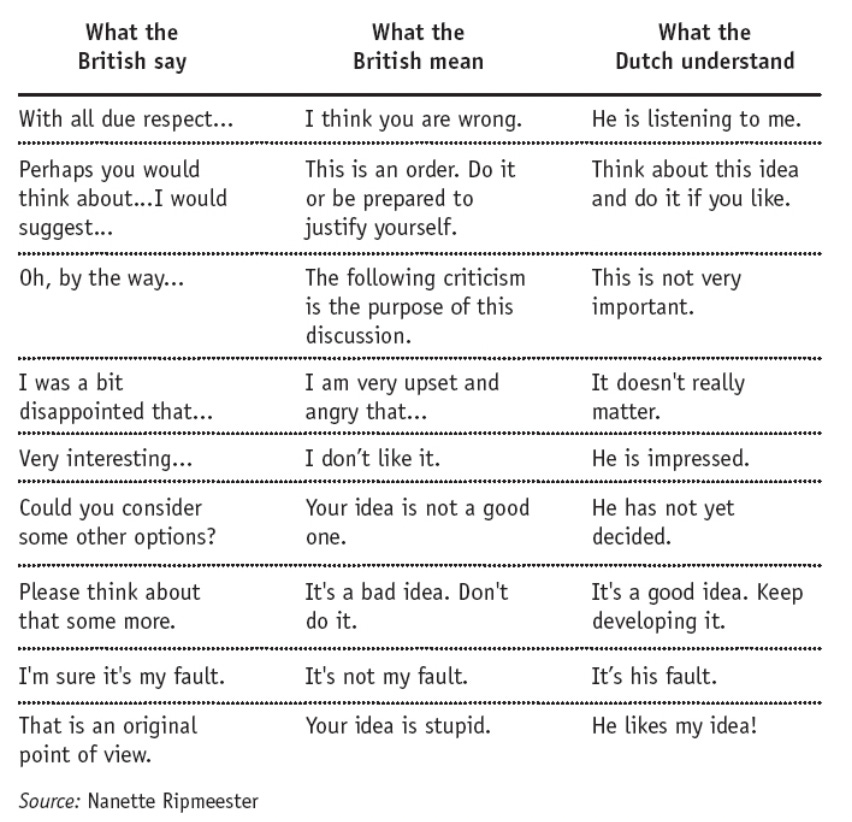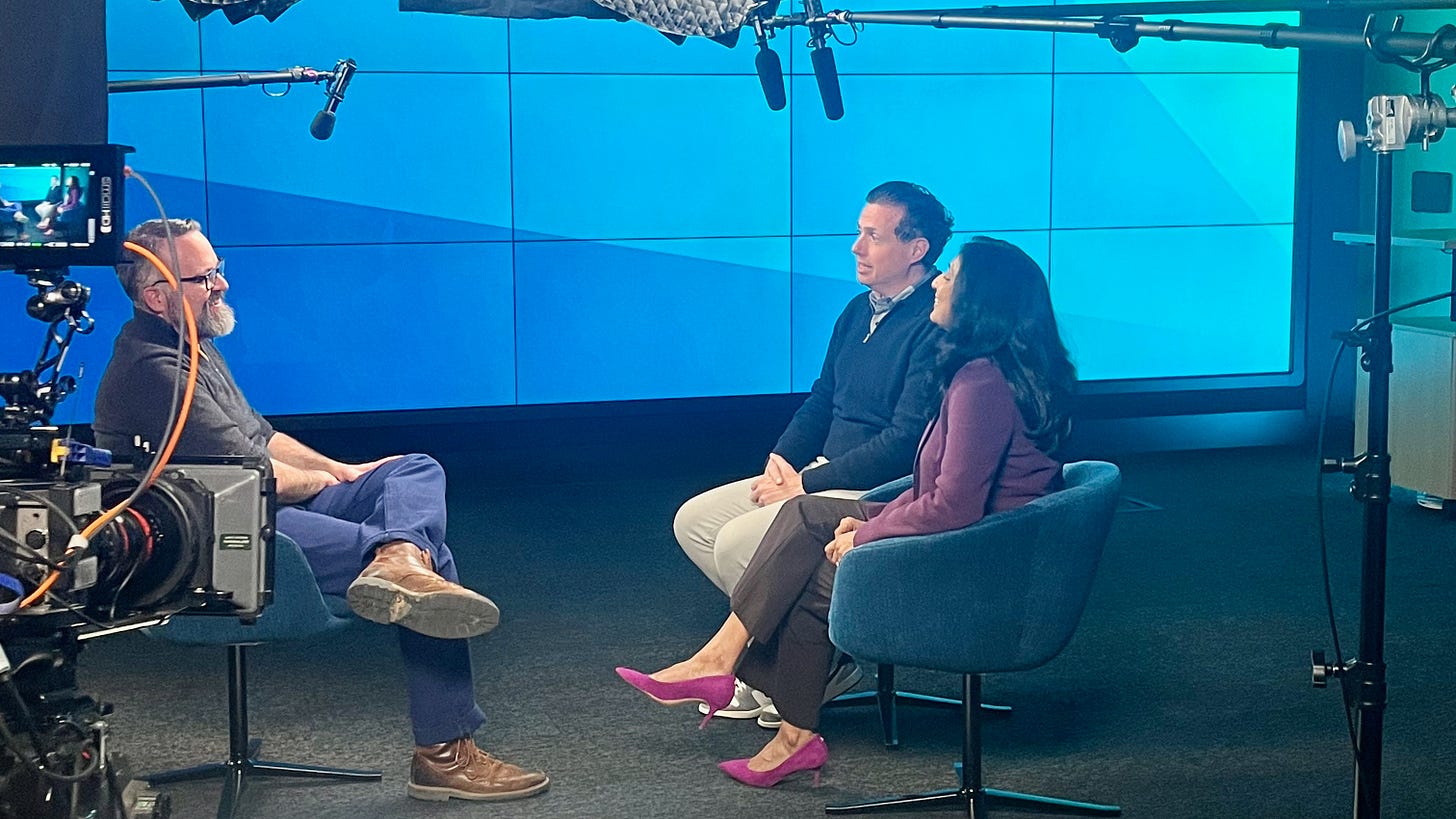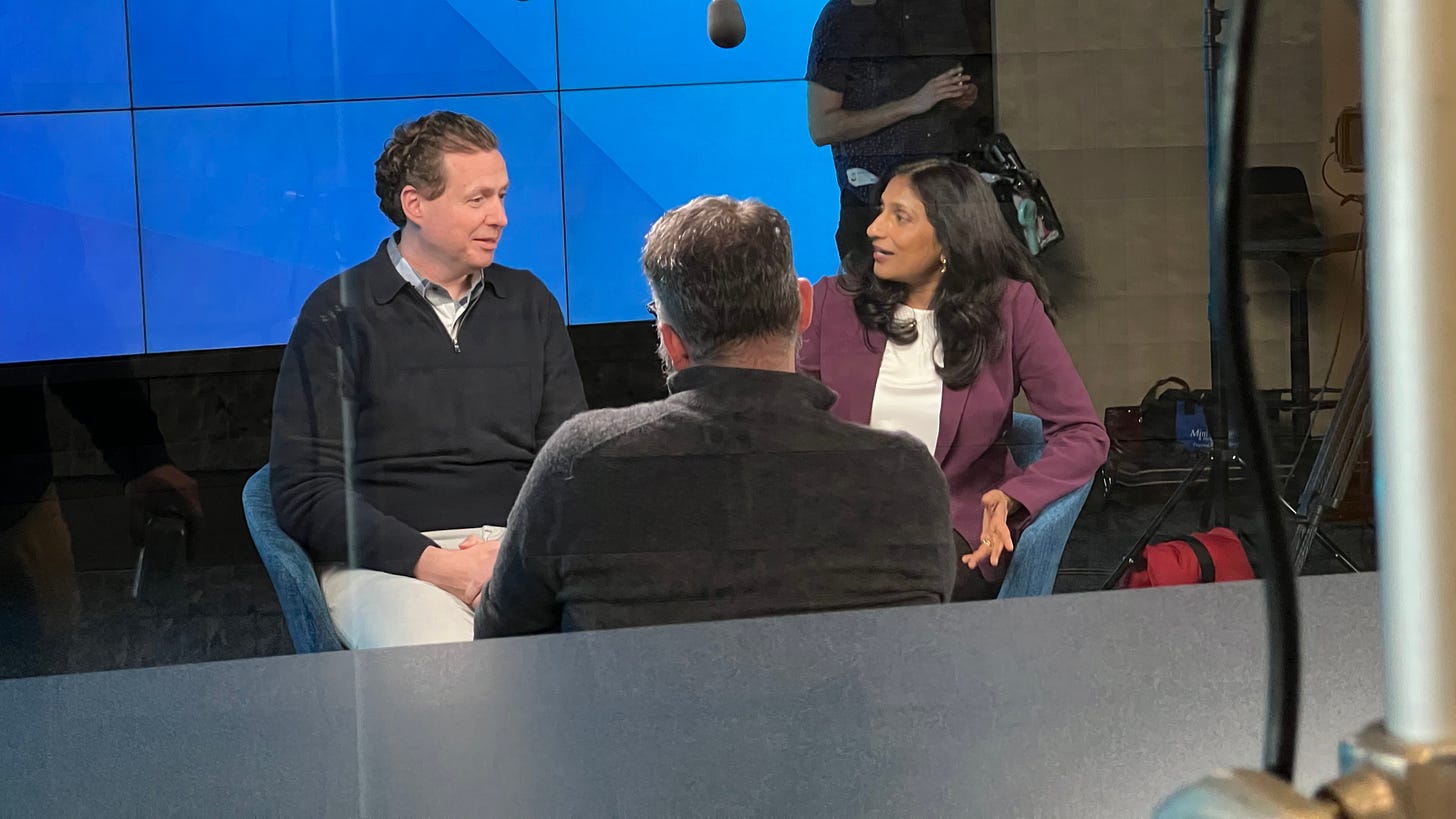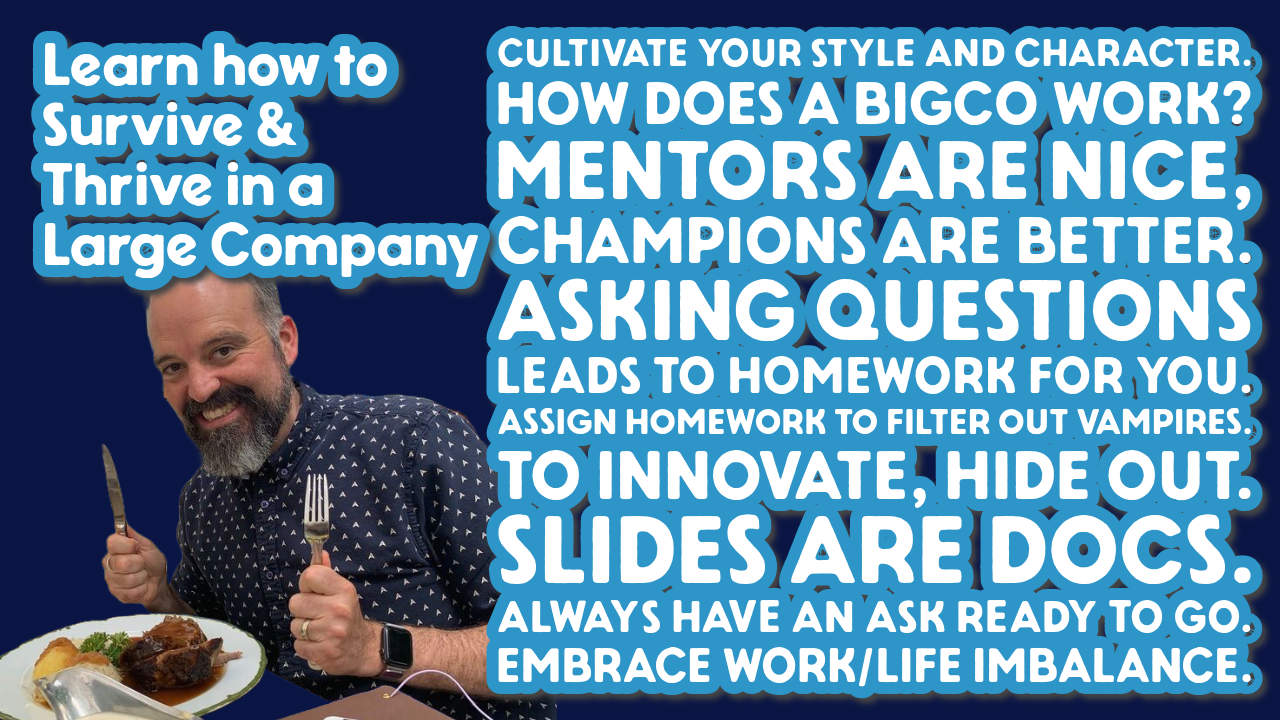Coté
Sometimes, Lipstick Is Exactly What a Pig Needs! - Abby Bangser, Syntasso & Whitney Lee, VMware - How can you start to take a design/UX-driven approach to building your platform (you know, your pile of Kubernetes stuff to pull it all together for app developers)? Whitney Lee & Abby Bangser have a good mind-model to think about designing the interfaces (how people use parts of that stack). Thinking through how you design your platform “interfaces” for app developers is especially important if you’re building your own stack instead of buying one of the already integrated ones.
How to write a business book proposal
I’ve written a few (little) business books, reviewed several, and reviewed several proposal for business books. Here’s what I think works well in proposals you’re sending to publishers:
The publisher is in it to make money first, “important” content second. Your proposal is a business pitch, not an idea pitch. Make sure you talk about who the audience is, why they will buy the book, and why your topic (the market for the book) is hot, or at least, room temperature. Remember: the publisher is looking to sell these books for $30 to $50 a piece. They better be worth it!
Defining the market/topic and why it’s “hot” is important. While they may publish a lot of books, publishers aren’t experts in the topics you’re covering, and becoming an expert isn’t what’s important to them. Selling the book is important. Don’t go too long on the market, but try to talk about why the market (current trends, what people want to buy, and why alternatives are not going to be as good as your book [or simply don’t exist]) is good and why this is the right time to publish a book, and why you’re the right one to write it.
Be brief (unlike this list!). You should have three sizes of your pitch: a 3 to 4 sentence email/paragraph; a one page version; a longer version. As the author, when you’re writing the proposal, you’ll find yourself wanting to go over the ideas and the actual writing. This is where you’ll write too many words. Summarize the take-aways people will get, quickly cover how you will teach people those lessons/take aways, and really focus on the next thing:
Focus on what will differentiate your book for the thousands of other already out there and that will be out there in the future. What is new, different, and unique in your book? New methodologies are good, just going over the basics not so much. Case studies and stories are the best because they’re often unheard and unpublished: they’re something new.
Have a detailed, “real” outline at the end. This will give the acquiring editor a quick idea of what’s in the book and also show that you’ve thought this out. Don’t worry about sticking to the outline as you write it, it will change and everyone knows that. In your outline, make sure to the differentiated stuff, especially case studies.
Talk about why you’re qualified to do this, why you’re an excellent choice. For business books, I would focus on your first hand experience if you have it. Did you work at an actual company, or are you just a consultant or working at a vendor? Do you talk with a lot of people in your community and have you gathered lots of stories over the years? In most cases, you won’t be a fun and entertaining writer (you’ll be a good writer, but being fun and entertaining is a whole other skill-set), but if you are, that’s an asset to emphasize as well. You will need a bio section, so put all this in there. Be sure to list any written material you already have, even videos and talks. You need some examples of your writing, hopefully published.
What fame and community can you bring to the book? Again, the publisher is in it to make money. How can your existing audience, network, etc. help make the book more money.
Other considerations:
Most publishers have their own template to fill out. They’re all general the same sections, just in different order, wording, length allowance, etc. Don’t get too hung up on getting your original pitch perfect because you’ll need to make it fit to whatever those templates are. Make the pitch in the template “perfect,” of course. And, obviously, just recycle the content.
Keep in mind that the publisher is also evaluating you as both a writer and as someone to work with. Proof read your text for basic writing mistakes and spelling, typos, to/too, lose/loose, affect/effect,1 etc.; use a consistent style on things (e.g., either end all bullet point lists with incomplete sentences with a period or don’t, use contractions or don’t, etc.) - you want to show that you’re meticulous about your writing and pay attention to the details that non-writers don’t even know exist; and try to demonstrate that you won’t be a handful to work with. Favor a “natural”/conversational style over formal, business speak. Write in the first person, use contractions, and try to use simple words instead of business bullshit words.
Some publishers do more than just books, so keep their business models in mind when pitching. For example, O’Reilly publishes books (focusing on a single sale of an e-book or 3D book), has an online collection of educational stuff for corporate accounts (focusing on making the ongoing subscription valuable), makes video series (here’s a really good one!), and licenses content to vendors for marketing/lead-gen.
Finally, just keep at it and don’t take anything personally. If they come back with questions and suggested changes to your proposals, work on those. That may seem discouraging, but as long as you’re still talking, they haven’t said “no” yet. Also, be nice: if if this proposal doesn’t work, they might be one in the future or other work you can do with them.
Proposals aside, for me at least, the most important thing is to start writing the book once you have the idea. Certainly propose your book to publishers, but don’t wait on it being accepted. In fact, if you’ve already written the book, or just large parts of it, proposing it will be easier.
Good luck!
I’ve been mentioning the in-person event we have about my work, Tanzu, here. We also have an online version coming up on April 3rd. I was in Palo Alto last week filming it. If you’re wondering what’s up with Tanzu (the Cloud Foundry stack, our Kubernetes stuff, our Backstage/etc. platform, the Spring Framework, etc.) now that we’re part of Broadcom, you'll find out at this event. You can of course register for free to see it: right here! I was there the whole time, so I can assure you that it’s good stuff.
And if you want to attend the in-person event on April 11th, then sign up here.
Conferences, Events, etc.
Talks I’m giving, places I’ll be, and other plans.
Tanzu (Re)defined, April 11th, Palo Alto. DevOpsDays Amsterdam, June 20th, speaking. NDC Oslo, speaking, June 12th.

Logoff
No links today.
I hate affect/effect. I don’t really understand the difference (yes, I have a dictionary, thank you). And, come on, it’s stupid that they’re different. I’d avoid using the words all together.
"Is a platypus a Kubernetes symbol?"
Wastebook
“Those sizzlers are nice.”
“Tell him I’m eating,” 9 minutes in.
“chair-use disorder.” Here.
“Is a platypus a Kubernetes symbol? Developers love to take scary things and make them cute.” (Overheard in the crowd before a Cory Quinn talk at SCaLE 21x.)
Also: “what about you, Charles, what are your thoughts on Terraform…and DevOps in general.”
Relevant to your interests
Study finds that once people use cargo bikes, they like their cars much less - “A new study out of Germany suggests that once you let people try them, they tend to have a real impact on car use, and even car ownership.”
Lengthy Memoranda and Gobbledygook Language: Be short and use Plain English by Maury Maverick - Be as simple and short as possible, the man says.
AI Chair 1.0 - ChatGPT gives instructions for building a chair out of some left over wood - and the guy builds it. // “ultimately, builds agency rather than contributing to our general disempowerment us.”
Prompt library - Prompts from Antropic, so, not crap.
HashiCorp reportedly pondering sale amid growing challenges - The DevOps Index probably isn’t doing too well? // “HashiCorp’s share price peaked at the end of December 2021 at $91.04 and at the time of writing is $28.80. The market capitalization is $5.2 billion.”
Finally, Platform Engineering for Enterprise Cloud Migration - “he asks them to talk about their top five or ten technological pain points. Then the Mechanical Orchard team starts to analyze the legacy system’s behavior based on intercepting inputs and outputs, in order to reproduce the system from there in an open source, cloud native way. This doesn’t mean they don’t use the source code when available — that’s just not the starting point.”
How to make use of typographic refinement in Pages & other macOS apps - Get really deep into fonts on MacOS.
What’s new with Tanzu Application Catalog - One of the easier things you can do to be more secure is having your own container registry. Here’s one that’s proven and ready to go.
Costco CFO ‘voice’ looks back on 40 years, $1.50 hot dogs and leadership | Grocery Dive - “We went out years ago and built a hot dog plant that makes two items, the big hot dog that we sell one at a time and then 12-packs or 10-packs of a smaller size for families. That’s a plant that makes 300 million hot dogs a year and we did that to take a few cents of the cost out by doing it ourselves in such huge efficient volumes and to try to keep that price lower. It’s become part of our folklore, both of those items you mentioned [the hot dog combo and the $4.99 rotisserie chicken]. In terms of changing prices those will be two things that would be last on the list and I don’t see it happening in the near-term.”
Bringing tech innovation to the American Red Cross - “We try to find the essence of the opportunity that matters most. We start small and then iterate. If you focus on a smaller problem and get that delivered, you have better chances of expanding it. It’s a good way to launch a product: get feedback, see if we are hitting the right areas, and expand from there. That gives us an opportunity to test an idea and then scale effectively once it’s successful.”
An interview with Piketty - “It depends” applies most of them time: “One of which is that I put excessive emphasis on the universal law of capital. But doing that was mostly a technique to organise a large quantity of data. So when I refer to the ‘first law of capitalism,’ I think it’s clear to anyone who reads me carefully that I’m always trying to historicise the processes and national specificities of how capital works, that it’s a political construction and so on. So these “laws” are not really laws, they are just simplified conceptual relations which can help organise a vast quantity of evidence.”

Conferences, Events, etc.
Talks I’m giving, places I’ll be, and other plans.
Tanzu (Re)defined, April 11th, Palo Alto. DevOpsDays Amsterdam, June 20th, speaking. NDC Oslo, speaking, June 12th.
Logoff
Last week was a crazy-long week of travel. It was nice to see friends, though!
What junior/senior developers and CTOs need to know about internal developer platforms
This is from last Fall at the SHIFT conference, but it still holds up:
Relative to your interests
Why Are Pants So Big (Again)? - tl;dr: you can wear comfortable jeans again. // “There’s constancy, I thought, and then there’s becoming a relic of yourself” And: “If you zoom out far enough, all the paroxysms around self-presentation arrange themselves into an orderly, eminently predictable swing between big and small – you could call it the pants pendulum.”
What if we rotate pairs every day? - “A few months after the experiment, one team gave us some interesting feedback: They found that when a problem came up in production, they didn’t need to depend on just one person to look into and fix it. The team could assign anyone to troubleshoot the issue. In addition, another feedback mentioned an incoming pair rotation brought new context that changed implementation direction and helped resolve a problem in the early stages of the feature’s development, thus saving the team lots of time and rework. These highlight the benefits of having knowledge spread among the team.”
Sanders pitches 4-day workweek bill in US Senate • The Register - Works are the last to get worker productivity benefits - AMIRIGHT! “Today, American workers are over 400 percent more productive than they were in the 1940s. And yet, millions of Americans are working longer hours for lower wages than they were decades ago.”
Understanding product marketing and go-to-markets - Good stuff.
White House adds teeth to secure software development requirements - ’“Attestation is now a hard requirement that will be enforced during the procurement or renewal process"…. Among the secure practices included in the guidelines, they include separation of production and development environments, use of multifactor authentication, regular logging and monitoring and other factors’
Europe’s AI Act demands extensive “logs” of users - This probably isn’t the kind of AI “safety” the nerds want, but the goals seems like what normies would want.
Great Marketing Machines Are Like Costco - Marketing (operations) is about doing a lot of things that lead to one pretty slide to the BoD. // “Great marketing machines are like Costco. There is no magic wand. There is no secret lever. It’s about 50 little things, all working together. And that’s one reason why people have trouble understanding them. This may be obvious, but I’d never previously seen it so clearly. CMOs show the funnel slide in board meetings with stages and conversion rates. But no one really understands the machine. They ask a few random questions, usually about channels. The inevitable attribution conversation follows. You can almost feel them searching for the one thing. But in this case, there isn’t one.”
Study finds that once people use cargo bikes, they like their cars much less - “A new study out of Germany suggests that once you let people try them, they tend to have a real impact on car use, and even car ownership.” // Electric bakfiets, as the Dutch call them, are awesome. It takes a few weeks of nerve control to cycle around Amsterdam with its narrow streets and along side other bikes, but then it is really close to having a car
Software Defined Talk Podcast
we discuss Coté's O'Reilly video series where he offers up some tips on how to survive and thrive in the workplace. Plus, some ideas on how to reinvent the virtual town hall.
This week’s episode is all about my surviving and thriving in large organization videos. Oh, you haven’t heard of that yet? Well, it’s a video series in O’Reilly. You should go watch it!
Wastebook
“I know the automation will happen anyway, I know those jobs will go anyway. But I’d rather not be the one to build that.” Here.
“I believe in laissez-faire for names, but if you are going to ban anything, surely ‘Elmer’ is worth some consideration?” Tyler.
“I don’t care! I like lots of things.”
“He moved to Chicago, married his college sweetheart, and found a job in a screw factory.” Here.
“This is an explanation, not an excuse.”
“Feel free to move fast and break it, and also feel free to pay billions of euros in penalties as a sort-of-tax for that privilege.” bruces.
“Seagulls' impact on local wildlife can be significant and surprising.” Here.
If you want to know what’s up with Tanzu now-a-days, you should come to the above event and find out. It’s “invite only,” which means it’s for “executives” that we’re interested in talking with. If you’re at a large organization and you’re involved in app development or cloud strategy, you’re probably the type of person we want there. Check it out, and register for it. (And if paying for the travel is a problem, register anyway and maybe we can help out with that.)
🌐 Register now.
Conferences, Events, etc.
Talks I’m giving, places I’ll be, and other plans.
Tanzu (Re)defined, April 11th, Palo Alto. DevOpsDays Amsterdam, June 20th, speaking. NDC Oslo, speaking, June 12th.
I can’t make it to KubeCon EU this year, but if you’re going: come to our little party at KubeCon EU, it’s Thursday night. Register for free here! And, if you’re going to KubeCon EU and haven’t registered yet, you can get 20% off with the code KCEU24VMWBC20.
Logoff
I had a long week in the States - arriving in Palo Alto on Saturday for a fun work thing, then to Dallas for an executive dinner Wednesday night, and then to Pasadena to give the opening keynote at DevOpsDays LA. While a week is too long for me to travel now-a-days, each of the events was great, and it’s been nice to meetup with people.
Good strategy
Re: “Bad” Strategy
Strategy is people, and in a corporate setting, all the wonky parts of people are amplified. In the places I’ve worked, the lower down you go in the organization, the less relevant strategy is. What’s relevant is the actions you can take, not the outcomes the executes are going for with their strategy, let alone anything resembling a classic big-S Strategy.
Besides, unless you have a huge chunk of equity, you get paid the same no matter the outcome. Long-term you’ll suffer if the company goes out of business, sure, but short and medium term, you’ll just keep chugging along. Thus, for most workers, if the stated strategy doesn’t direct what actions to take (and not take!), it’s not very useful.
This also applies to OKRs. What’s missing from OKRs are the actions it takes to get from the O to the KR. This annoys me to no end. And, yeah, I read that OKR book a few years ago. You can’t set an objective and a realistic key result if you haven’t imagined the actions you’ll take to get there. Executives build the system that everyone works on, and just like an enterprise architect that no longer codes, if the executive has no idea, or even second hand experience of how the work is done, it’s hard to imagine what needs to be done to reach the KR. This means the KR is what they hope will happen, not what’s happen-able. To hedge: sure, I bet there’s just fine OKRs, but it’s too easy for people to mess them up.
Doing strategy in large companies is very difficult. One of the huge advantages of startups is that they can do MVP/lean strategy, if any at all. Big organizations often don’t - can’t - test and validate strategy content and adjust it every quarter or two to match what customers actually want.
Anyway, this is why the context and thinking around strategy is more important then the 25 to 30 words of the actual strategy. Fitting corporate strategy on a slide is a good start, but then outlining how it’ll be done is what really matters.
(Provoked from this good piece.)

Relevant to your interests
Cognizant Predicts GenAI Will Inject $1 Trillion Into the U.S. Economy - Seems like a lot of money.
Corn - “I've just had what feels like the hundred billionth reader inform me that, with all due respect, Hild is quite wrong to talk about corn in 7th-century Britain. And for the hundred billionth time I've politely responded that, actually, no, there's no mistake. To Hild, corn is wheat, not maize.”
IT leaders dial back cloud-first strategies as hybrid IT becomes more of an investment priority - People interested in lowering costs, on-premises and public cloud. I mean, who’s ever like “nope, I’m fine spending more when I could be spending less.” // “over a third of the study’s EMEA participants (36%) are taking a cloud-first approach to new application deployments, which is slightly down on a similar study carried out by TechTarget in 2023. Back then, around half of the participants indicated that their organisation was favouring a cloud-first approach when choosing the best environment to deploy new applications and workloads.”
Oh hey, check this out: With Tanzu CloudHealth, “[b]y enabling the [South African FSI Discover] to streamline its expenses and resources, the solution helped Discovery realize a 40 percent reduction in costs in less than a year’s time.”
AI startups require new strategies: This time it’s actually different - Good stuff.
Pairing and interviewing at Pivotal - People seemed to like this. Of course, there was survived bias: the only people who talked about it had gotten the job. Still!
Codefresh and Octopus: GitOps, K8s and VMs Under One Roof - The “greenfield aasumption”…I like that! // ‘“The ‘greenfield assumption’ has broken and is still breaking a lot of advanced DevOps software implementations by failing to accommodate the complexities of real-life environments,” Torsten Volk, an analyst for Enterprise Management Associates (EMA), told The New Stack. “The vast majority of enterprises still have, and will have for many years, messy and heterogeneous environments that somehow need to be made part of CI/CD and GitOps.”’
Speaking of, an example of the greenfield assumption anti-pattern in action: “A widespread local presence and deep roots in the community have given Germany’s savings banks a high standing since they were founded around 200 years ago: Tradition breeds trust. However, traditional financial institutions today find themselves confronted by growing competition – not to mention the need to design more customer-oriented offerings. FinTechs, for example, start ‘from the green field,’ do not bring legacy mountains of data with them and offer customer-oriented services quickly and efficiently.”
4 Engineering Slides CEOs Love - There’s a good mix of “business value” and inward facing technical activities and health-checks.
Michael Joseph Lost and Found - Modern day hitchhikers and train hoppers.
Is GenAI’s Impact on Productivity Overblown? - Generative AI hasn’t been around long enough to figure out what to do with it, especially in enterprises. Before you spin up too many projects and budget, you need to experiment with and validate how you apply it. After around a year of using ChatGPT, I suspect it’s a lot like email, intranets and intranet search, CRM, etc.: it’s not good enough to replace knowledge work, but it’s a better tool than what we have. Also, in the article, the point that productivity is nice, but accuracy is better: “while changes in task completion speed are easy to measure, changes in accuracy are less detectable. If an employee completes a report in five minutes instead of 10, but it’s less accurate than before, how would we know, and how long will it take to recognize this inaccuracy?”
Facing reality, whether it’s about Apple or the EU, is a core requirement for good management - Understanding the EU’s position and motivation for the recent nerd/regulators fight.
How DZ BANK uses a Cloud Run-first approach to unlock big savings, with Google Cloud - “We are now three years into our modernization journey with Google Cloud, and we’ve seen significant benefits. Running containers on Cloud Run instead of on-prem VMs eliminates OS and infrastructure maintenance, delivering a 70% toil reduction. In addition, the pay-per-use pricing model has reduced our infrastructure costs by 90%.”
Wastebook
“Unlimited Netflixing in Your Mind.”
A lot of executizing is removing context from your write-up. Background, explanation, proof, discussion - context. Most (American-style) executives wants to know the outcome, the conclusion, the decision to make, the next steps. Once they’ve decided they like the conclusion then they might be interested in understanding why it’s a good conclusion.
“Things are the way they are because they got that way.” Here.
“Revolutionizing Printing in the Modern Workplace” Sure to be a real heart-racer.
“Font security ‘still a Helvetica of a problem’” Here.
“The lunacy comes from a place of joy.” Sharp Tech, March 7th, 2024.
“Bring 2–3 wardrobe options, pressed and ready to go.”
“Some days you wake up and realise that you’re waiting on other people to do so many things that you yourself have become somewhat paralysed by the waiting.” Here.
We’ve got a little event coming up next month, Tanzu (Re)defined. Unlock the secrets of expert app development and delivery at VMware Tanzu's exclusive event. Dive into Tanzu Application Platform, Tanzu Application Service, and the Spring Framework. Discover optimization strategies for cost, performance, and security. Gain insights from Tanzu Labs' 30 years of app experience. Meet Tanzu's Executive Team and industry peers for practical strategies.
🌐 Register now.
Conferences, Events, etc.
Talks I’m giving, places I’ll be, and other plans.
Executive dinner on Java Security, March 13th, Dallas; DevOpsDays LA, speaking, March 15th, Pasadena “We Fear Change” talk; KubeCon EU, March 19th, Paris; Tanzu (Re)defined, April 11th, Palo Alto. DevOpsDays Amsterdam, June 20th, speaking. NDC Oslo, speaking, June 12th.
Come to our little party at KubeCon EU, it’s Thursday night. Register for free here! And, if you’re going to KubeCon EU and haven’t registered yet, you can get 20% off with the code KCEU24VMWBC20.
Logoff
Every now and then I like to try to slip something fun into the corporate world. I came up with that event name, “Tanzu (Re)defined” and thought, surely, someone is going to say this is silly. But, people liked it.
//
Also, hey, if you like my stuff about work-life, you’ll really like my new video series over at O’Reilly. If you work at a big company, you might already have access to it. You should check it out!
//
I’m on a weeklong tour of the States this week. As I’ve said before, I’m more or less over business travel. I’ve done it for 19 years now, and with three kids, a wife, a dog, two snakes, and turtle at home…but these long trips are really too much now.
Many of the people I grew up with in business travel don’t seem to travel much anymore either. However, business travel is a huge part of my job - it just is. And it’s hard to envision what else I’d do that’d have as much value and, despite what I’m saying, fulfillment.
But, you know: also I can’t go around harrumph-y about it, I’m sure there’s people who’d gladly switch places. Must be nice!
I did a video series with O’Reilly going over my advice for surviving and thriving (“working,” I guess) in a big company. “You should watch it, it’s really good,” raves the man who made it.
So, you should check it out.

“Little surprises around every corner, but nothing dangerous.”
Just links today.
Relevant to your interests
Two methods for designing better, more developer friendly platforms - Two ways to make good platform product management decisions: go to where the developers are, ask the developers // a little article by me.
Platform Engineering: Orchestrating Applications, Platforms, and Infrastructure - A big overview of platform engineering. Also: Syntasso gettin' into the devrel game!
Forrester: Tips for assessing hybrid cloud management - All these years later, enterprise workloads are still running on all the clouds, public and private. // “87% of global cloud decision-makers say their organisations deploy enterprise IT workloads on public cloud, private cloud and in datacentre hosting facilities.”
Dell COO: AI will move to the data - (Enterprise) AI will go to where its cheapest to run, by whatever factors.
Why Kubernetes needs an LTS - Currently, you can patches for the kubernetes version you’re running for supported for 14 months (12 months of support and 2 months of upgrade period)," a year and two months. He wants to make it 2 years: “I would propose an LTS release with a 24 months of support from GA and an understanding that the Kubernetes team can’t offer an upgrade to the next LTS. The proposed workflow for operations teams would be clusters that live for 24 months and then organizations need to migrate off of them and create a new cluster.” // LTS-talk makes my head hurt, but I think the charts in here are OK. // Also, vendors love LTS as an enterprise feature, and it usually is worth paying for. But, it’s also a trap if you let yourself get locked-in to older versions.
CNCF Survey: Half of Organizations Spend More with Kubernetes, Mostly Due to Overprovisioning - “The survey participants shared their views on why running Kubernetes can get quite expensive. The main reason for overspending was overprovisioning (70%), accompanied by the sprawl of resources not being deactivated after use (43%). The second cluster of responses was related to the lack of visibility and insight into consumption and spending (40%) and the lack of awareness and responsibility at the individual and team levels (45%). Technical debt related to not re-architecting workloads migrated into the cloud environment for scalability accounted for 43% of the overspending. Further down, the respondents pointed to resource-hungry workloads (25%), fluctuating consumption demands (23%), and poor planning/prediction of cloud consumption.”
Wastebook
“Little surprises around every corner, but nothing dangerous.” Willy Wonka.
“The person continues to operate out of the old attitudes and strategies, but they are no longer effective.” Some Jungian shit.
“When all else fails, wear a mustache so everyone sees you as more man-like.” Here.
“Like, why would I want to look snappy in the office?” Here.
Conferences, Events, etc.
Talks I’m giving, places I’ll be, and other plans.
Executive dinner on Java Security, March 13th, Dallas; DevOpsDays LA, speaking, March 15th, Pasadena “We Fear Change” talk; KubeCon EU, March 19th, Paris; Tanzu (Re)defined, April 11th, Palo Alto. NDC Oslo, speaking, June 12th.
Come to our little party at KubeCon EU, it’s Thursday night. Register for free here! And, if you’re going to KubeCon EU and haven’t registered yet, you can get 20% off with the code KCEU24VMWBC20.
Logoff
See you next time!
How to avoid working too much
Surviving and Thriving in a BigCo
If you work in a large organization, you’ll like this new video series I did with O’Reilly. Check out the intro above, and here’s the topics covered:
Cultivate your Style and Character.
How does a BigCo Work?
Mentors are Nice, Champions are Better.
Asking Questions Leads to Homework for You.
Assign Homework to Filter out Vampires.
To Innovate, Hide Out.
Slides are Docs.
Always Have an Ask Ready to Go.
Embrace Work/Life Imbalance.
If you have access to O’Reilly, you should check out the videos. If you work at a large organization, especially in a technical role, you should watch them all! You can get some kind of certification if you take the quizzes (a sort of hilarious thing for this type of content, but whatever).
These are good videos, if I don’t say so myself. If you like my style of stuff, you’ll like these. Tell me what you think!
Microservices Modernization Missteps: Four Anti-Patterns of Rebuilding Apps - and how to avoid them
One of my colleagues has a post out going over four anti-patterns when you're modernizing to microservices: (1) Relying only on code and documentation for business context; (2) Unvalidated architecture; (3) Insufficient test automation; (4) Big bang releases.
I helped put it together, so, you know, I think it’s pretty useful stuff. Check it out!
Software Defined Talk podcast #456
This week, we second guess recent decisions made by Google and Apple. Plus, what social media sites is everyone actually using these days?
Take a listen! Check out the unedited livestream video if you’re really a super-fan.
Relative to your interests
We CAN Have Nice Things: Upgrading to Java 21 Is Worth It - “It’s (Jave 21) also morally superior. You won’t like the look of shame and sadness in your children’s eyes when they find out that you’re using Java 8 in production.”
Thanks Oracle! Java licence squeeze puts a rocket under Azul - “Oracle, by developer use, was probably 60 to 70% market share according to Gartner. This year, that’s down to 30%. ” // Meanwhile, since Jan 2023: “The Oracle Java Licensing change made organisations purchase a licence for their entire employee population if even a single employee or server has installed a_ licensable_ version of Java – which is widespread, often without organisations realising this. And Oracle, notorious for its ferocious audits over the years, is stepping up audits of Java users.”
Wastebook
“Every idea is a story of someone trying to solve a problem.” Here.
“Boy, are you going to be glad you opened this newsletter. Because you are about to learn about the lone banana problem.”
“A primer on space mining — and its impact on the IT sector.” From a 451 report.
Conferences, Events, etc.
Talks I’m giving, places I’ll be, and other plans.
Executive dinner on Java Security, March 13th, Dallas; DevOpsDays LA, speaking, March 15th, Pasadena “We Fear Change” talk; KubeCon EU, March 19th, Paris; Tanzu (Re)defined, April 11th, Palo Alto. NDC Oslo, speaking, June 12th.
Come to our little party at KubeCon EU, it’s Thursday night. Register for free here! And, if you’re going to KubeCon EU and haven’t registered yet, you can get 20% off with the code KCEU24VMWBC20.

Logoff
After a week of pissing rain, it’s sunny hear in Amsterdam. We’ll see how the weekend goes.
//
I finally got my 2FA login for my Twitter account fixed. I’d been ignoring it since the Fall, just posting my content, and then got locked out sometime in December or January. There’s still so many people in my tech world there. It’s kind of weird, weren’t they all supposed to abandon it out of Elon-hate, or something? I feel like I chose the wrong path during all that nerd-wailing. I’ve got a large enough following in Mastodon, but there’s just not as much engagement as I’m used to (there are a handful of people there that I write back and forth with that are great, though). And since I missed out on the initial tech-invasion of Threads (since I live in the EU), there’s not much there. This stuff always comes down to years of curation and activity, which is hard to build back up.
I don’t think that federated dream (where Threads, Mastodon, and Bluesky all interior) is ever going to come true: that was clearly just some hopeful-nerd talk last year. (And now that you an pay Twitter to remove all ads, what they should do is open up third party APIs for the Premium+ customers - they’re not missing out on ads anyhow - but, whatever). It’d be great to have an Adium-like app for all that shit. Dreams! Anyhow, speaking of quality content (or lack thereof!) I have a backlog of lots of my silly videos to post in Twitter.
devPRops - better put PR in your backlog
Better put PR on the backlog
Art for no one, by no one. Art whose only audience is the collective pathos. Incredible. [AI culture problems as art]
The Gemini thing: the conversation around AI technology is now based on how it can navigate social and cultural issues, less if it “works.” These social and cultural issues eventually wear out - people forget - so you have to just stay alive and hold it back. Also, with AI (as with most technologies), you can fix the features/bugs that provoked the social and culture issues. In one way, the negative feedback is just “feedback” that you’d expect in the lean product methodology. However, with social and cultural issues, it’s difficult to accept failure as learning (product management feedback).
Social and cultural issues are usually negative, rarely positive.
Facebook means you can keep up with family and friends, previously we had letters and expensive long-distance phone calls. Now we bemoan screen time instead of saying “holy fuck, never mind a 1,000 songs in my pocket - now I have the Internet in my pocket!” I’d have to trust schools to adapt to my kid’s learning styles, pay a lot of time and money for private tutors, now they can ask ChatGPT to explain concepts to them in the style that works for them.
Also, with (business) software, the benefits are mostly boring: making it cheaper to run computers and software, speeding up or removing shitty office work (who wants summarize meetings that you didn’t want to be at in the first place?), removing the friction and bottlenecks of reaching new customers and interacting with newer ones (online bill pay instead of mailing checks; automating inventory instead of walking around with a clipboard and pencil). “People have forgotten, I think, just how big a deal having a common interface to all the storage arrays was with VMware like before,” Justin. When transferring money in the US is finally fixed (like it is in Europe), few people are going to writing and podcasting about that for months on end: “regional credit unions enable easy money transferring, yay!”
My point here is not to bemoan this - it is what it is! - but to be prepared for it, to weave it into your operational strategy, your product management. Put PR in the backlog, call up your marketing and comms people, and have them take a seat at your daily stand-up meeting. You’ll need them and their contribution will be as valuable as any technical thing. devPRops.
“Rude” is culturally relative
I’ve lived in the Netherlands for almost six year, and as a Texan, this is still a daily struggle:

Dreams of Having it Both Ways
Phase 01: There is too much vendor lock-in and there are only, like, two viable options for anything. Why don't these people innovate anymore?
Phase 02: Oh my God! Have you seen how many choices there for everything?! <insert CNCF Landscape lulz here>.
Phase 03: GOTO Phase 01.
Relative to your interests
3 Ways to Help Struggling Open Source Communities - By supporting local meetup groups and sharing your time with organizers, you can help sustain our vital tech communities.
RTO doesn’t improve company value, but does make employees miserable: Study - ‘"Results of our determinant analyses are consistent with managers using RTO mandates to reassert control over employees and blame employees as a scapegoat for bad firm performance," the researchers concluded.’
How startups beat incumbents - “big companies don’t like to take big risks even when the outcome might be large. The fear of failure is an order of magnitude more motivating than the desire to innovate or even the greed of success.”
Sabre completes migration to Google Cloud, closes 17 data centers - Starting in 2020, now in 2024: “Over the course of this effort, we’ve closed 17 data centers and moved more than 40,000 servers, 400,000 CPUs, and 50 petabytes of storage into the cloud.” Congrats!
Public Intellectuals Have Short Shelf Lives–But Why? - Keeping thought-leader’ing fresh is difficult. // “why are so many public intellectuals capable of generating insight, originality, or brilliance at the beginning of their careers, but are utterly incapable of fresh thinking a decade later?” // “Old attitudes die because generations that hold them _literally _die off. Such is the stuff of progress and disaster. Such is also the problem of the public intellectual. A public intellectual’s formative insights were developed to explain the world he or she encountered during a specific era. Eras pass away; times change. It is difficult for the brain to keep up with the changes.”
Me: “I want to start seeing (only?) more analyst estimates of kubernetes usage by app/workload (not just if people are using it). Not out of some desire to see it be small and poke fun at it, but just as with public cloud in the 2010’s to just know what’s actually happening. We need that annual (quarterly would be better) thing like the storage growth/data explosion thing IDC and EMC used to do.1 That’d be great for the CNCF to start estimating. All opinions about how hard it is are besides the point now: adoption and migration of workloads (and also new workloads) to it are the only thing that matters and is interesting).”
How I stay (more) focused with ADHD - “I often go to a café to write, and it helps me a lot to focus on writing. As much as I loathe noise and distractions, the café noise and presence of other people (known as body doubling, see below) help me to focus on writing. Unless, of course, I can hear and understand what people are talking about — in this case, I must hear the gossip.”
Why Do East Asian Firms Value Drinking? - Also, a lot of charts and ideas from The Culture Map, a great book for understanding differences in business communications across the globe.
TikTok Is For Millennials, It Turns Out - Everyone gets old. // “it’s probably smart to not assume that the kids are the ones responsible for whatever new weird thing is on your FYP. Those videos are probably being made by weird adults.”
What It’s Like to Be a Sociopath - “Yes, [as a journalist conducting an interview] you are manipulating people to a certain extent — to your point — in the way that I might manipulate somebody in therapy, but I would never feel the need to justify it, and your justification came so quickly. That’s why I was like, Hey, what’s happening that you felt the need to defend your answer?”
Gemini For Google Workspace Plays The Long Game Gemini for Google Workspace Plays The Long GameAI Insights artificial intelligence - Office workers are the new kingmakers. // “If you don’t give them something sanctioned, they’ll use bring-your-own AI tools such as ChatGPT on the web, opening your organization up to security and privacy risks and rendering their activities unmonitored by your IT team.”
30+ ways I’m using AI in everyday writing life as a technical writer, blogger, and curious human - Whole lot of prompts, many related to writing, but plenty of everyday things.
Legendary CEO James Keyes: Here’s how I saved 7-Eleven–and why I couldn’t save Blockbuster - Lesson learned: avoid being $1bn in debt during a financial crisis.
Wastebook
“It makes a sound like mixin' macaroni and cheese.” Here.
“parameters and pushback”
“Sam Altman tech CEO speedrun.” Here.
Conferences, Events, etc.
Talks I’m giving, places I’ll be, and other plans.
Executive dinner on Java Security, March 13th, Dallas; DevOpsDays LA, March 15th, Pasadena “We Fear Change” talk; KubeCon EU, March 19th, Paris; Tanzu (Re)defined, April 11th, Palo Alto.
Come to our little party at KubeCon EU, it’s Thursday night. Register for free here! And, if you’re going to KubeCon EU and haven’t registered yet, you can get 20% off with the code KCEU24VMWBC20.
Logoff
I’m home for a few weeks, then traveling for two weeks: to the US for a three city tour (including DevOpsDays LA and that executive table above); the next week in Paris for KubeCon. I need to get on submitting talks to more conferences. I don’t know, man. Is there anything left to talk about?
It’s hilariously hard to find a link to these studies/PDFs some ~13 years late. But I assure you, they were a big fucking deal! It goes to show you how transient and, you know, PR-driven this stuff is. Also, the value analyst shops put on their work: only fresh for a year or two? Seems silly to me!
Potato chips that taste like Thanksgiving stuffing - what could go wrong?
Relative to your interests
Cluetrain at 25 - This was an important book to me when it came out. It probably had a huge influence on my professional life. All these years later, I think it was right. The biggest evolution, unexpected, was that the Big Bad Corporate Octopus took it seriously and figured out how to monetize the shit out the Cluetrain. Toot! Toot!
How to Stay Grounded Through Organizational Chaos - There’s a lot of good advice here, but the most important is here: “If your organization’s approach raises concerns or if you find yourself constantly questioning its strategies, it’s worth considering whether you’re in the right place. While “pretending that certainty exists is delusional,” it’s possible to find an organization that’s more aligned with your values, and where work feels less like a constant whiplash.” // The toolkit to examine if your company has a good strategy, operations/execution, and the stability needed to function…that toolkit is hard to assemble, use, and trust. // Also, I’ve become leery of the “the only thing you can control is yourself.” This is an easy mindset for a Roman emperor to have, and equally easy if you live in a big-ass clay jar with no other responsibilities or possession in life. But in the middle of those polls, the problem starts to be more than just your mental vibes, and getting to inward looking detracts from fixing the overall system.
What is a long context window? Google DeepMind engineers explain - “Previously, Gemini could process up to 32,000 tokens at once, but 1.5 Pro — the first 1.5 model we’re releasing for early testing — has a context window of up to 1 million tokens — the longest context window of any large-scale foundation model to date. In fact, we’ve even successfully tested up to 10 million tokens in our research. And the longer the context window, the more text, images, audio, code or video a model can take in and process.” // Once they allow uploading multiple files (in the EU, where I live), that will be something. There’s only so many tokens you can cut and last into a web browser field (literally, they cut it off!).
Tanzu Spring Runtime: Empowering Developers for Tomorrow’s Challenges - If you’re using Java apps to run your business, you should get this integrated stack instead of worrying about doing all the DIY work to take care of and update and secure that stack itself. Also, it means you’ll have support and training.
Addressing cloud waste: 4 steps to cloud computing cost optimization - “Organizations with little or no cloud cost optimization plans rush into cloud technology investments,” according to Gartner. “They end up overspending on cloud services by up to 70 percent without deriving the expected value from it.”
9 Things You Need to Know About the Threads Algorithm - Getting the juice. As ever, fucking around in the comments seems to help.
AI Companies Lose $190 Billion After Dismal Financial Reports - When share prices drop that much, it means that money was never there in the first place and was just made up fantasy-land shit. Nothing was lost if nothing was there.p
How I’d use generative AI to modernize an app - As it says
Kmart October 1989 : Tape-A-Thon - A pile of tapes of the in-store music is available. Amazing! Here’s an overview of it.
Giving Fifty Percent - “perhaps a lot of the extra effort we thing we’re putting into a task is actually comprised of anxiety and stress and maybe we could just relax and get the same thing done to the same level in roughly the same time, and be happier about it.” // This is one - accurate! - way of looking at the mysterious part of the creative process, whether programming, writing, whatever. The actual activity - typing, painting, cooking - is a small part of the overall, uh, “value stream” needed to create. When you ignore the value of all that other stuff, you damage the whole process. We’re just starting to understand this in enterprise software development: you have to pay attention to the entire span of time between an idea and a person using your app. It’s even more so in non-programming creativity. Taking a walk and seeming to “do nothing” is literally part of the process and if you remove it, you degrade the “business value” of the “business outcome.” There’s some more musing on this in this week’s Software Defined Talk - subscribe, mofos!
Quick Riff on Narrative Strategy - “Narratives as worlds. Consultant as world-runner.” // There’s something important here for marketing people: a lot of marketing work is actually the company figuring out it’s own narrative, studying what products it does, what customers it has, those customer’s jobs to be done, even how sales is done. “Strategy” is supposed to do a lot of that, as is product management. But at most tech companies I’ve worked at, marketing ends up being where that all comes together and becomes…legible? This can be very good, but it can also be very dangerous. Customers don’t really care shout your inner looking narrative; they don’t want to read summaries of your therapy sessions. They just want to know why they would give you money, how and why your product/service will solve their problem without costing more that it should. Investors want to read the transcripts of your therapy sessions, sure, but “the market does not.” If your find that your marketing is spending a lot of time on story telling, and not much on product, you should be very careful.
Related: in tech marketing, customers don’t care how hard it was for you to make the product. Just tell them how it’ll solve their program and that the pricing isn’t a rip-off or enterprise-gouging.
Fight Between Employees, Managers Over Return-to-Office Is Getting Messy - He’s not a fan of remote work. And, really, what worker is?
Wastebook
“sales inflictment.” Here.
“Hastily made hobo-porn.” Here.
“Woke up very confused at how my brain functions, but very excited for dream Margot Robbie’s financial future.” Here.
Move “having made something” to “making something.” - finishing something is just part of the larger joy of making something. It’s in the cycle of creation, feedback, and improvement that you find the real work. Savor the meal, but remember, the best part is knowing you’ll get to cook again soon.
“I now understand that tote bags are bumper stickers for pedestrians” Here.
Conferences, Events, etc.
Talks I’m giving, places I’ll be, and other plans.
Executive dinner on Java Security, March 13th, Dallas; DevOpsDays LA, March 15th, Pasadena “We Fear Change” talk; KubeCon EU, March 19th, Paris; Tanzu (Re)defined, April 11th, Palo Alto.
Come to our little party at KubeCon EU, it’s Thursday night. Register for free here! And, if you’re going to KubeCon EU and haven’t registered yet, you can get 20% off with the code KCEU24VMWBC20.
Logoff
I forget if I’ve actually written this, or wrote it and deleted it from here… I’ve been thinking much recently about what exactly it is I do: do I still enjoy it? Is it still relevant? To put in a dangerous way: do I like my job?
My focus for almost ten years has been “how large companies get better and building and running software” (hence my easy alignment to Pivotal - “transforming how the world builds software” and then getting all butt-hurt about Kubernetes destroying all of that). And what are the results? It’s easy to say not much, but I think I just get used to the new normal. I talked with a gaggle of C-types this week on the getting better at software topic and it was both well received and fun for me. There is still a tremendous amount of interest in the topic…because large organizations have a lot of “transformation” ahead of them still.
Still, what am I doing here? I want desperately to avoid being that old thought-leader that just says the same old thing over and over, for years. After awhile, it causes a “no thoughts found” Ker-chunking in my brain. Also, it’s so boring.
It’s easy to say (to myself, as I often do) that what I should do is re-learn Java and Spring and go down the stack some. There’d be so much interesting to learn and talk with people about when it comes to using AI in big companies. All of that “secure software supply chain” thinking and stuff applies to AI - it’s just more apps, tons of regulated data flying around…but it’s actually very close to “the business.” Talking about AI is a bigger, even more important field than talking about (or caring about!) Kubernetes, Cloud Foundry, even Java itself.
There’s also been a severe reduction in the amount of business travel I do. Obviously since COVID, but also because of the more cost conscience state of my work and strategy fluidity over the past few years. It’s made me realize how many of my friends are road-friends. I don’t mean this in that “self-care” way of being dismissive about friends you make at work. I think that’s utter bullshit: friends are friends.
So, you know: what am I doing here?










